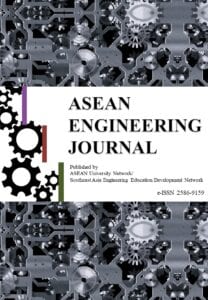THE POTENTIAL OF LAHARIC FLOWS DISASTER ALONG GENDOL AND OPAK RIVERS, YOGYAKARTA, INDONESIA
DOI:
https://doi.org/10.11113/aej.v4.15541Abstract
Gendol River flows from the south slope of Merapi Volcano meets Opak River to form a wider river, namely Opak River. In the upper stream of Opak and Gendol Rivers area, volcanic material accumulated from the 2010 Merapi Volcano eruption that ready to flow downstream through both rivers. The total amount of volcanic material in the Merapi’s peak area is predicted as much as 140 million cubic meters, part of it is distributed in the upper stream of both rivers. In the downstream area, the Opak River flows nearby the great Prambanan Temple and across the main road of Yogyakarta-Surakarta capital cities.
To know the laharic flow disaster potential of both rivers, collecting of primary data along the river flows is needed in order to understand the characteristic and mechanism of laharic flows. DEM analysis combined with ArcGIS 9.3 tools are applied to know the additional volume of volcanic material after 2010 Merapi Volcano eruption. The triggering factor of laharic flows in the study area including the runoff, soil water saturation rate, rainfall and soil water saturation time are mathematically calculated based on data analysis on soil mechanics.
Based on the calculation of thickness and distribution in the Merapi Peak area, the mass volcanic material that is ready to be transported as the laharic flows through Gendol and Opak Rivers is around 14,745,496 m3. The volcanic material can transform into laharic flows by initial runoff if the soil water saturation column reach at least 5.96 m. With the rainfall average in the southern part of Merapi Volcano is 17.32 mm/day, that saturation value can be reached by 21.8 hours in the upper stream area and 17.67 hours in the lower part area. If the laharic flows occurred, the damage would happen in villages along the rivers, Prambanan Temple, and Opak River’s Bridge connecting Yogyakarta-Surakarta main road.
















